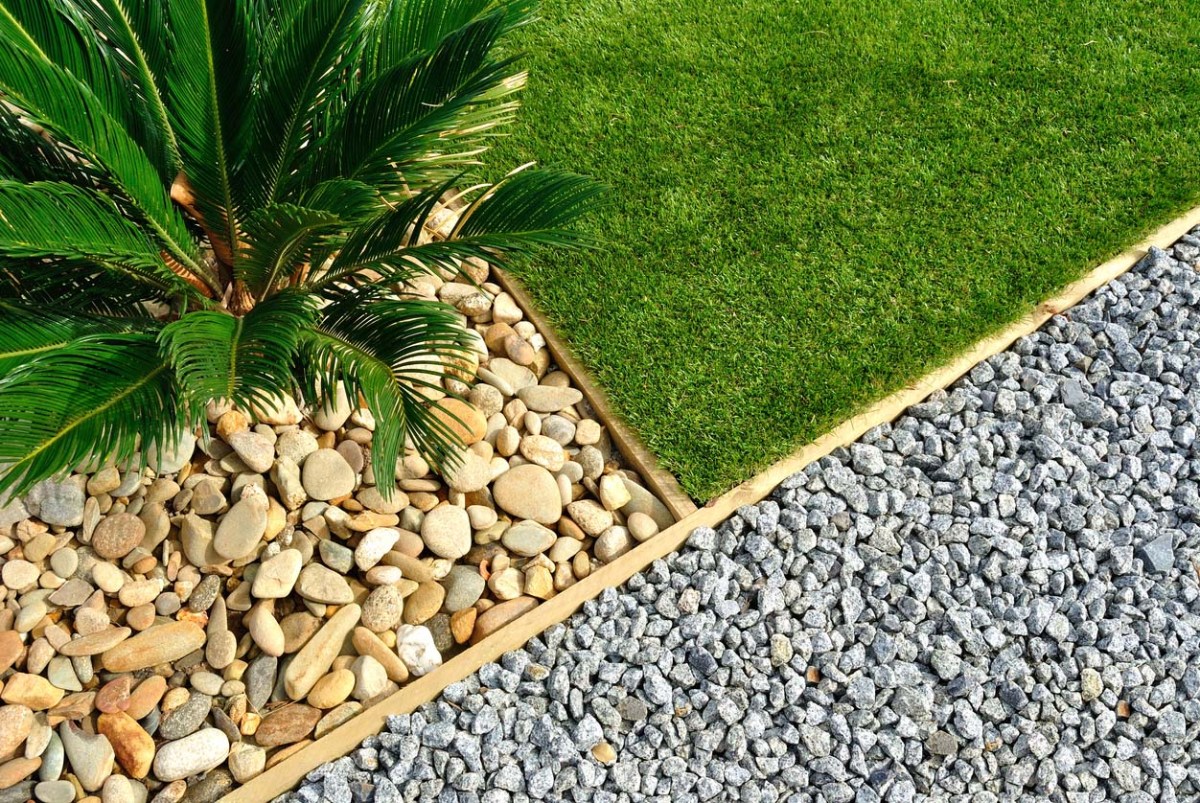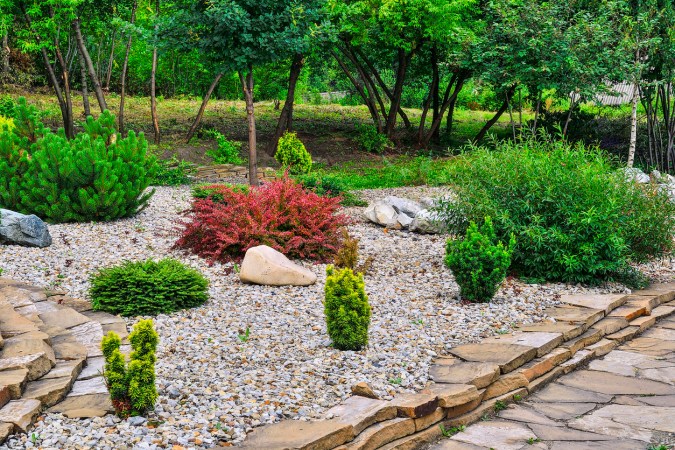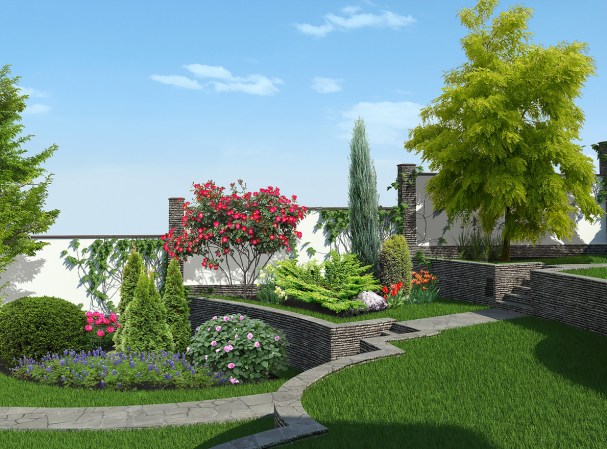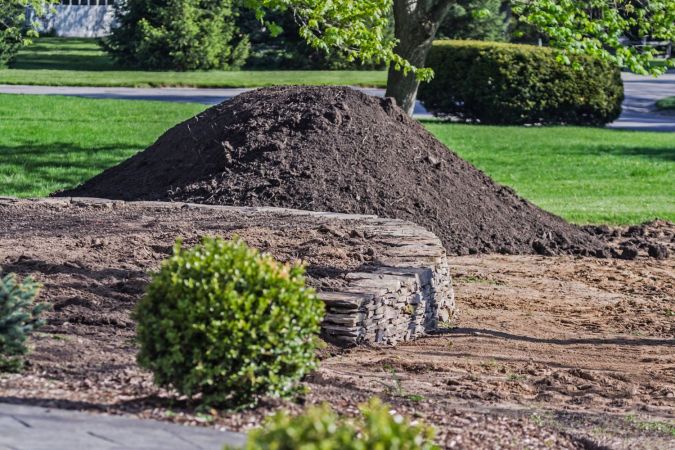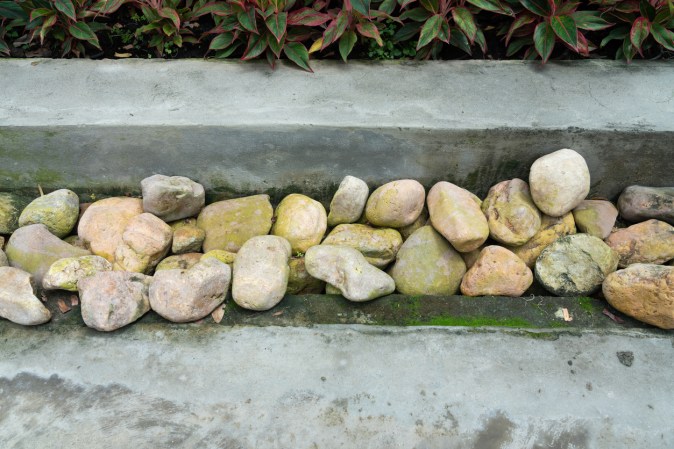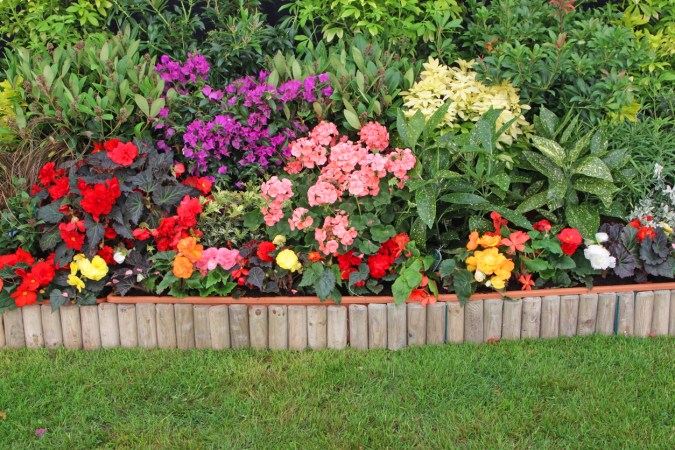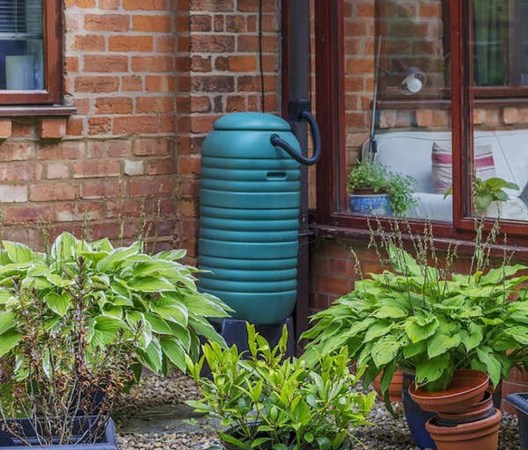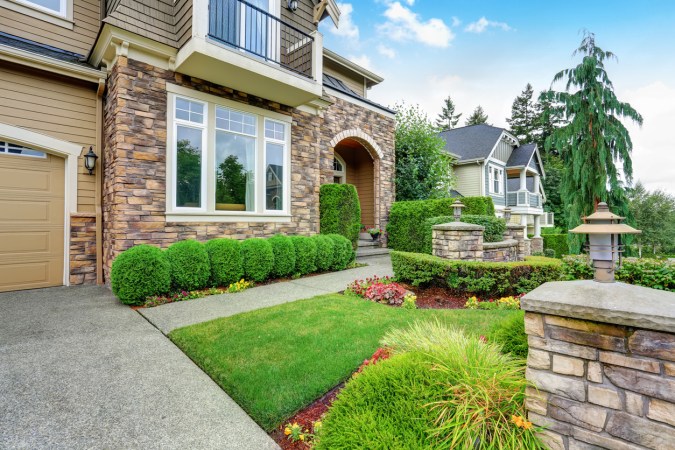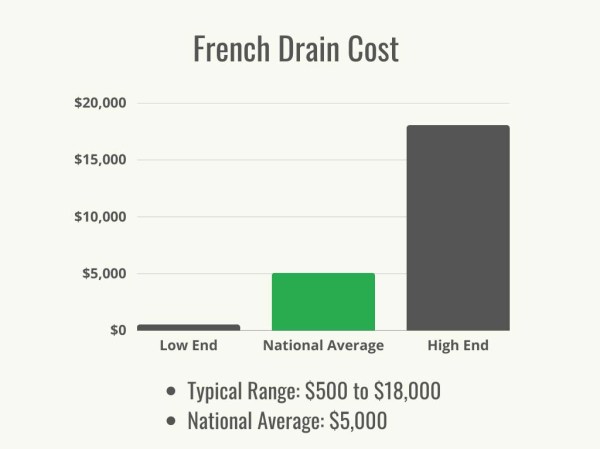We may earn revenue from the products available on this page and participate in affiliate programs. Learn More ›
Highlights
- The cost of landscaping rocks typically ranges from $460 to $1,000, with homeowners paying a national average of $650.
- The main factors that affect the cost of landscaping rocks are the type of rock, the size and weight of the rocks, the size of the area where the rocks will be installed, and delivery and installation costs.
- Homeowners can enjoy many benefits when installing landscaping rocks, including pest resistance, improved drainage, and a versatile and low-maintenance outdoor area.
- A homeowner who is used to manual labor and lifting heavy loads may be able to install landscaping rocks themselves, but a professional will know the best types of rock and the right equipment to use to complete the project safely.
There are many different landscaping ideas for a homeowner to consider when planning their home’s outdoor space, and one aesthetically pleasing option is to use landscaping rocks. Incorporating landscaping rocks and river stones in a home’s landscape design is a good-looking and cost-effective choice with many benefits. Landscaping rocks and stones are low maintenance and durable, they help improve drainage and manage erosion, they keep pests away, and they can be used for a variety of different projects. Rocks and stones are often chosen for driveways, walkways, gardens, retaining walls, water features, borders and edges, fire pits, as a mulch substitute, and simply to add a decorative flare with color and texture. Available in a wide range of colors, sizes, weights, and textures, rocks and stones are an excellent way to boost the curb appeal of a yard. Given this variety, there is a wide range of prices as well. According to HomeAdvisor and Angi, the cost of landscaping rocks and river stones is between $460 and $1,000, with the national average being $650. This includes both purchasing and installing the materials.
Factors in Calculating the Cost of Landscaping Rocks and River Stones
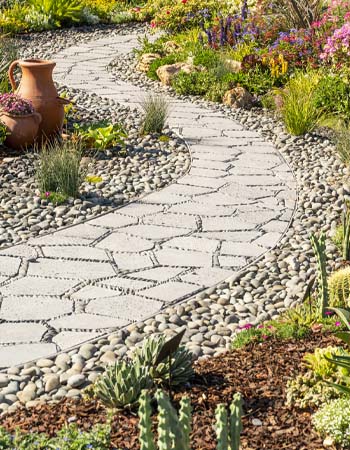
What factors impact the cost of installing landscaping rocks and river stones? First of all, prices may vary depending on whether the chosen product is rock vs. stone. Other factors play a role, such as quantity, type, size, weight, and delivery and installation fees. Homeowners will want to consider the following cost factors when planning a landscaping rock project.
Landscaping Rock or River Stone Type
With so much variety in landscaping rock and river stone, it can be both exciting and overwhelming trying to decide the best option to fit with the landscaping design. The type of rock or stone chosen will dictate the ultimate cost of the project. From white rocks to pea gravel to black rocks for landscaping, there is likely a product to fit every preference and budget. Homeowners will want to keep in mind that large boulders, Mexican beach pebble, and polished river rocks are on the higher end of the price spectrum, while pea gravel and crushed rock are on the lower end.
Rock Size and Weight
Rock size and weight can affect the price of the project. The larger the rock, the more expensive it will be since more effort is required to transport and install it. Bigger rocks are also heavier and denser. Therefore, there will be fewer large rocks than small rocks for the same price. For stone boulders, prices can be as high as $600 per ton.
Bed Size
The bed size, or the amount of rock needed, will influence the total cost of the project. While there are landscaping rock calculators available, there are also ways to figure it out without that tool. Bed size can be calculated in cubic yards or in tons and requires measurements of the length, width, and depth for where the rocks will be placed. Landscape professionals work with these types of measurements all the time, so it is best for homeowners to rely on their calculations. Here are some examples of rock amounts needed based on the bed size.
| Bed Size (Feet) | Square Footage | Total Cubic Feet | Total Cubic Yards |
| 2 by 8 | 16 | 4 | 0.15 |
| 5 by 5 | 25 | 6.25 | 0.23 |
| 5 by 10 | 50 | 12.5 | 0.46 |
| 10 by 10 | 100 | 25 | 0.93 |
Delivery and Installation
The labor required to transport, deliver, and install the rocks or stones needs to be considered when assessing the budget. Landscaping companies charge $50 to $75 per hour for ground preparation and installation. It is usually a 2-hour project to place 1 ton of landscaping rock, totaling about $100 to $150. Delivery is additional, ranging from $350 to $1,200, or an average of $700. Final costs are based on the size of the rocks, size of the area, type of terrain, location, and detail of the design. Homeowners will want to keep in mind that high-end rock options, such as bull rock, boulders, and lava rock, will probably cost more to deliver and install.
Additional Costs and Considerations
When planning a landscape design budget involving rocks and stones, homeowners will want to be sure to factor in any additional costs, such as whether the rocks will be used as an alternative to wood mulch, whether existing rocks need to be removed from the property, and whether the rocks will be used for building a fire pit, retaining wall, water feature, or other type of landscape enhancement.
River Rocks vs. Mulch
Instead of using wood mulch, homeowners can opt for crushed granite or lava rock to serve the same purpose. Lava rock is porous, durable, and good for drainage. It also prevents weeds and lasts for years. Decomposed granite breaks down and provides nutrients and minerals to the soil. Both types or rocks retain moisture, reduce erosion, and discourage pests. Using rocks instead of mulch in landscaping costs less in the long run since the rocks can last 15 years or more, but wood chips need to be replenished frequently. Mulch starts at $25 a cubic yard and can go up to $180 a cubic yard, while landscape stones are $130 to $910 per cubic yard.
Existing Rock Removal
Whether a homeowner wants to remove rock to change the look of the landscaping or needs to get rid of old materials to bring in new ones or to make room for a new pool, deck, or river rock patio, it’s important to understand what this type of project entails. Hiring a professional to remove landscaping stones will cost from $50 to $200 per cubic yard, with most companies charging between $120 and $150 per hour. The price depends on the complexity of the job and whether equipment needs to be used for large rocks and boulders. Small rocks can be removed using a rock vacuum, but larger rocks may require the use of excavators or other heavy equipment. Homeowners will want to keep in mind that there may be extra fees for disposal.
Additional Landscaping
To enhance the landscape design, homeowners may decide to use landscaping stones and rocks to create a few extra elements in their yard. Retaining walls prevent topsoil erosion and can serve a functional purpose as well as providing an ornamental element. They can be constructed out of stacked stone and natural stones. The budget for this type of project is between $15 and $95 per square foot depending on the type of stone used. River rocks are often used for a water feature, such as a waterfall or pond. The average cost to install a pond is between $1,900 and $6,500. An attractive fire pit also needs some landscaping stones, which cost in the range of $350 to $3,000.
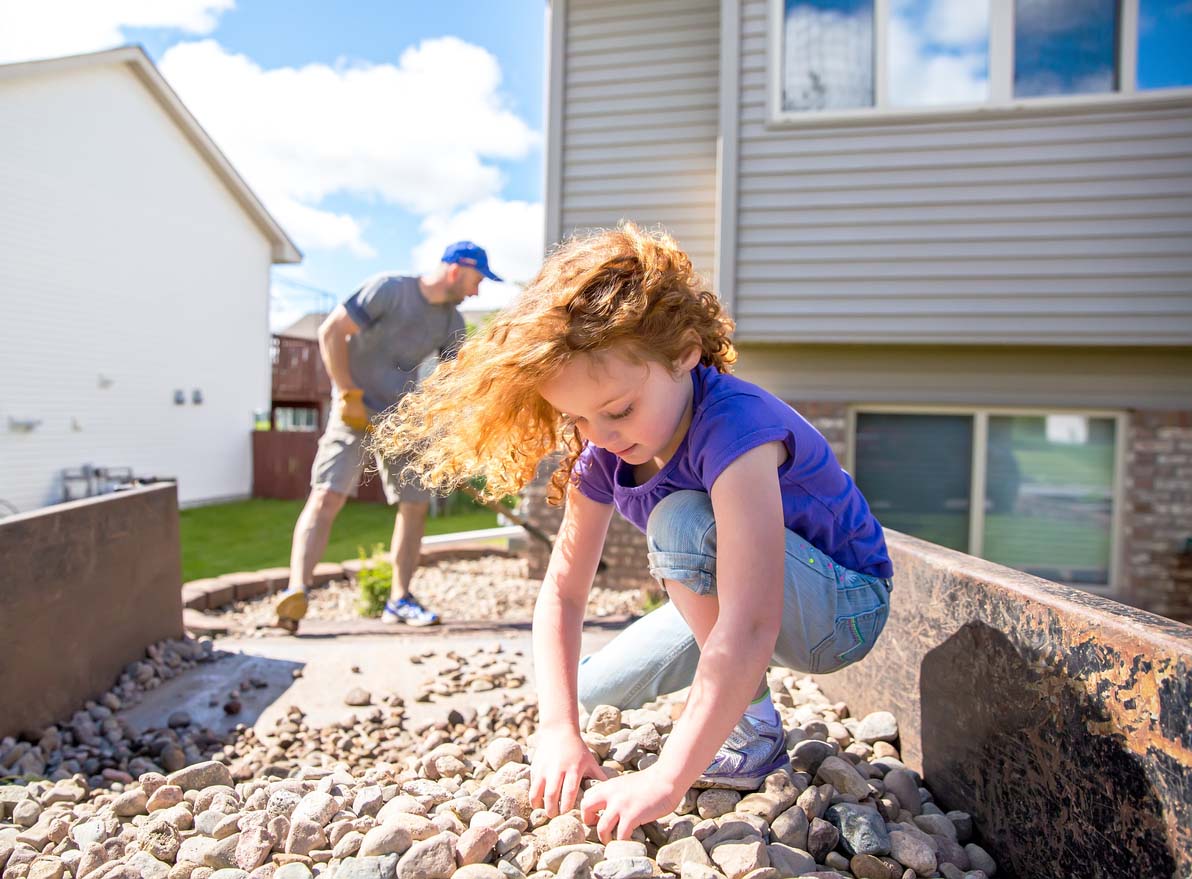
Types of Landscaping Rocks
Landscaping rocks come in an extensive variety of shapes, colors, sizes, weights, materials, and price points. From red landscape rocks to black stones for landscaping to pebbles, there are many choices available. By understanding each of their key characteristics and costs, homeowners can choose the best option for their landscaping needs. The following are the main types of landscaping rocks and their average costs.
| Type of Rock | Average Cost per Ton |
| Bull | $75 to $100 |
| Concrete or polymer steps | $200 to $600 |
| Crushed stone, rock, or shells | $50 to $70 |
| Decorative | $50 to $65 |
| Granite | $40 to $100 |
| Large boulders | $100 to $600 |
| Lava | $150 to $200 |
| Mexican beach pebble | $800 to $900 |
| Pea gravel | $30 to $60 |
| Riprap | $35 to $250 |
| River rock | $100 to $800 |
| White | $10 to $20 (per bag) |
Bull
Bull rock is a round, smooth stone that looks like large gravel. It comes in sizes ranging from 2 to 5 inches in diameter and a variety of natural colors such as brown, tan, and beige. It typically costs $75 to $100 per ton and $37 to $150 per cubic yard. Often found behind retaining walls and in drainage ditches, bull rock is also used for landscape edging, rock gardens, driveway and foundation borders, and xeriscaping. Bull rock stones can also be used to fill gaps in the backyard and can easily be purchased at home and garden stores for $4 to $30 per bag depending on the weight.
Concrete or Polymer Steps
For a long-lasting, versatile, and affordable stone, consider concrete or polymer. These rocks come in a variety of shapes, colors, and sizes to fit any landscape design and cost between $200 and $600 per ton. Fortunately, they are easy to install, so installation costs are likely to stay low.
Crushed Stone, Rock, or Shells
Crushed stone, rock, or shells cost in the range of $50 to $70 per ton and $40 to $50 per cubic yard. This material is commonly used as loose-fill for driveways, paths, and patios. Crushed limestone for landscaping is particularly popular since it is both practical and attractive. Costing about $20 to $30 per ton and $30 to $45 per cubic yard, crushed limestone comes in a variety of colors ranging from white to pale gray and even dark gray. It provides a nutrient-rich ground cover and helps reduce acidity levels of the soil, which makes it a good alternative to mulch. The only negative is that it can sink into the ground, but using a landscape fabric layer can help prevent this.
Decorative
To create embellishments in yards and gardens, decorative landscaping pebbles and crushed stone for landscaping are a good choice. Homeowners can expect to pay $50 to $65 per ton, although buying in bulk can save money. These materials are available in a variety of colors and types.
Granite
There are two varieties of granite used for landscaping: decomposed and crushed. Decomposed granite is formed from weathered igneous rocks such as quartz, mica, and feldspar. The crushed version is slightly larger and chunkier than decomposed granite and tends to be pricier, but overall they are both affordable options. The price of decomposed granite is $40 to $70 per ton and $30 to $50 per cubic yard, while crushed costs between $75 and $100 per ton or $50 and $70 per cubic yard. Both types come in similar colors including black, beige, gray, red, and green. Crushed granite is often used as an alternative to mulch; as a liner for drainage areas; or for walkways, driveways, and patios. Decomposed granite is used for pathways, driveways, patios, and as a transition to soften the space between a rock path and flower bed. Since crushed granite can get muddy and slip away with erosion, it is not recommended in rainy areas.
Large Boulders
For a unique and dramatic landscaping accent, a homeowner may want to incorporate boulders into the design. Typically larger than 10 inches in size, boulders come in both round and angular shapes. They are often used to create a focal point or for fire pit seats, steps, retaining walls, and rock clusters. Landscaping boulders range in price from $100 to $600 per ton. The smoother and larger they are, the higher the price. Some can easily be carried, while others will require a crane or other type of machinery to move and place them in the yard. Homeowners will want to ask about delivery fees, which can range from $250 for a small boulder to $2,400 or more for very large boulders.
Lava
Considered a creative landscaping option, lava rock is a porous and durable igneous rock formed from cooled volcanic lava that comes in a mixture of textures from glassy to rough. The price ranges from $150 to $200 per ton or $75 to $150 per cubic yard, depending on color, size, and location. Since lava rocks are lighter than other types of landscaping rocks, delivery and installation are less expensive. These black garden rocks (also available in shades of red and gray) are often used to fill borders. They can also be used for pathways, flower beds, and planters and as an alternative to mulch around trees and near fences. Homeowners will want to note that lava rock can blow away in heavy wind, so it’s not ideal for areas that frequently experience high winds.
Mexican Beach Pebble
As one of the most expensive types of landscaping rock available, Mexican beach pebbles cost between $800 and $900 per ton or $550 to $650 per cubic yard. The main reason for their high price tag is that they are handpicked from beaches and tropical coastlines, then sorted for uniformity. They are small (0.5 to 2.0 inches), very smooth, rounded, look polished, are easy to walk on, have an attractive multitoned appearance, and last a lifetime. These pebbles come in a variety of colors, including black, gray, brown, and red. Mexican beach pebbles can be used in planters; for driveways and walkways; and to fill dry stream beds, create colorful mosaics, make rock gardens, and provide decorative accents around water features.
Pea Gravel
As its name suggests, pea gravel is broken-up river rock that is the size of a pea. This landscape gravel is typically used to fill in play areas, walkways, flower beds, drainage beds, and fire-pit areas. Pea gravel comes in a variety of colors to match any landscaping theme and can be found easily in nurseries and garden stores. Prices range from $30 to $60 per ton or $20 to $40 per cubic yard.
Riprap
Less decorative than other stones and more uniform in color, riprap is an interlocking system of angular, cobbled stones that landscapers use for various purposes such as retaining walls, fire pits, stone fences, and waterfall features. These often flat rocks for landscaping are particularly beneficial since they help prevent erosion and provide structural support. Riprap comes in sizes ranging from 6 to 30 inches in diameter and various shapes and textures since it can be trap rock, limestone, granite, and other types of stone. Prices are $35 to $100 per ton for small riprap (6 inches to 2 feet) and $50 to $250 per ton for larger options (2 feet or more). The stones can come grouted or not. With the grouted version, cement holds the stones together to reduce any gaps and keep the stone in place; this one is a bit more costly. Finally, homeowners will want to keep in mind that landscapers charge between $50 and $100 per hour to lay riprap.
River Stone or Rock
River stone or river rock is any sedimentary, igneous, or metamorphic rock found in rivers and creeks and comes in a variety of river rock sizes, shapes, and colors. In fact, there are about 50 shades of green, gray, black, and brown, and these rocks can even come with stripes, speckles, or striations. The key characteristic of all river rocks and river stones is that moving water has worn them down so they have a smooth surface. Landscaping with river rock costs $100 to $800 per ton depending on the finish and style of the material. Polished river stone costs more, and prices can range depending on the color and patterns of the rock. In landscaping, river stones and rocks are used to create mosaics, walking paths, landscape edging, and hard mulch around fire pits and plants. They are also used in places where water needs to be drained to prevent flooding.
White
Another option is white stones, which tend to be a popular choice given their polished appearance. They are typically used as a decorative accent or for walkways. Benefits of white rocks for gardens include being durable and low maintenance. Plus, they are economical at $10 to $20 per bag.
Benefits of Using Landscaping Rocks or River Stones
Besides enhancing the curb appeal of a property and allowing a homeowner to save money on lawn care, landscaping rocks or river stones provide many benefits. Installing rocks and stones as part of landscape design helps improve drainage, offers a versatile and durable option to ground cover, keeps pests away, and is low maintenance throughout the year.
Low Maintenance
Unlike a lawn that requires mowing, trimming, watering, and fertilizing, a rock landscape needs minimal maintenance. The rocks can easily be washed with a hose as needed. Other than that, landscaping rocks are a low-maintenance option. Plus, there is no need for a homeowner to worry about planting new seeds, flowers, and plants every season or investing in mulch.
Pest Resistance
Another helpful benefit of landscaping rock is that it is an inorganic material that does not attract pests such as termites and other insects. Wood mulch, on the other hand, can be a haven for termites, which can cause lots of problems in the yard.
Durability
Unlike wood mulch, stones for landscaping do not start to fade or break down when exposed to wind, sun, water, and other elements. They can also withstand heavy foot traffic on walkways and driveways. Finally, their durability makes them a good option for any climate.
Versatility
Not only does landscaping rock come in a plethora of colors, sizes, shapes, textures, and materials, but it also can be used in many ways when it comes to landscape design. These rocks can form walkways or paths through a garden or from the sidewalk to the front door. A creative designer can use them to make mosaics or a labyrinth. Some homeowners have unique front yard landscaping ideas where they replace grass with pea gravel or other small rocks. Large landscaping rocks and boulders can be placed as a focal point in a zen garden. All sizes can enhance a water feature such as a pond or waterfall. No matter what a homeowner or landscape designer dreams up, there are rocks and stones to help the design come to fruition.
Improved Drainage
Without proper drainage, the lawn can get muddy, puddles will appear often, and there may even be problems with leaks in the home’s foundation. Not only is this unappealing and problematic, but it can also attract mosquitoes. One solution is to use pea gravel or other rocks to improve drainage. This way, the water can move freely through a gravel-covered area as opposed to pooling on top of the soil. This is especially an effective solution for homes on an incline or at the bottom of a hill.
Landscaping Rocks Installation: DIY vs. Hiring a Professional
A homeowner who has gone through one of the best online landscape design courses and feels confident in their skills can come up with a solid plan for their home’s landscaping. But while a small landscaping rock installation can easily be done as a DIY project, it is best to call a professional (especially when lots of heavy lifting is involved) since it can potentially be dangerous. Plus, a landscaper understands all the pros and cons of different rocks, what equipment to use, and how to make everything look as appealing and high quality as possible. The best landscaping companies typically charge $45 to $75 per hour for installation, and it usually takes 1 or 2 hours to lay 1 ton of stone. Plus, the price of delivering the material can range from $200 to $800 per day.
DIYers also need to have the right equipment in addition to the rocks themselves, including a wheelbarrow, shovel, tape measure, landscape fabric, rake, rubber edging, gloves, and steel-toe boots. These materials can add up to $290 to $455 to the cost. It is safe to say that homeowners can probably handle installing rock when it’s used as a flower bed, mulch, or weed barrier. However, when it comes to more involved projects, such as building a retaining wall or water feature, then it’s often better to hire a professional to get the job done correctly and safely.
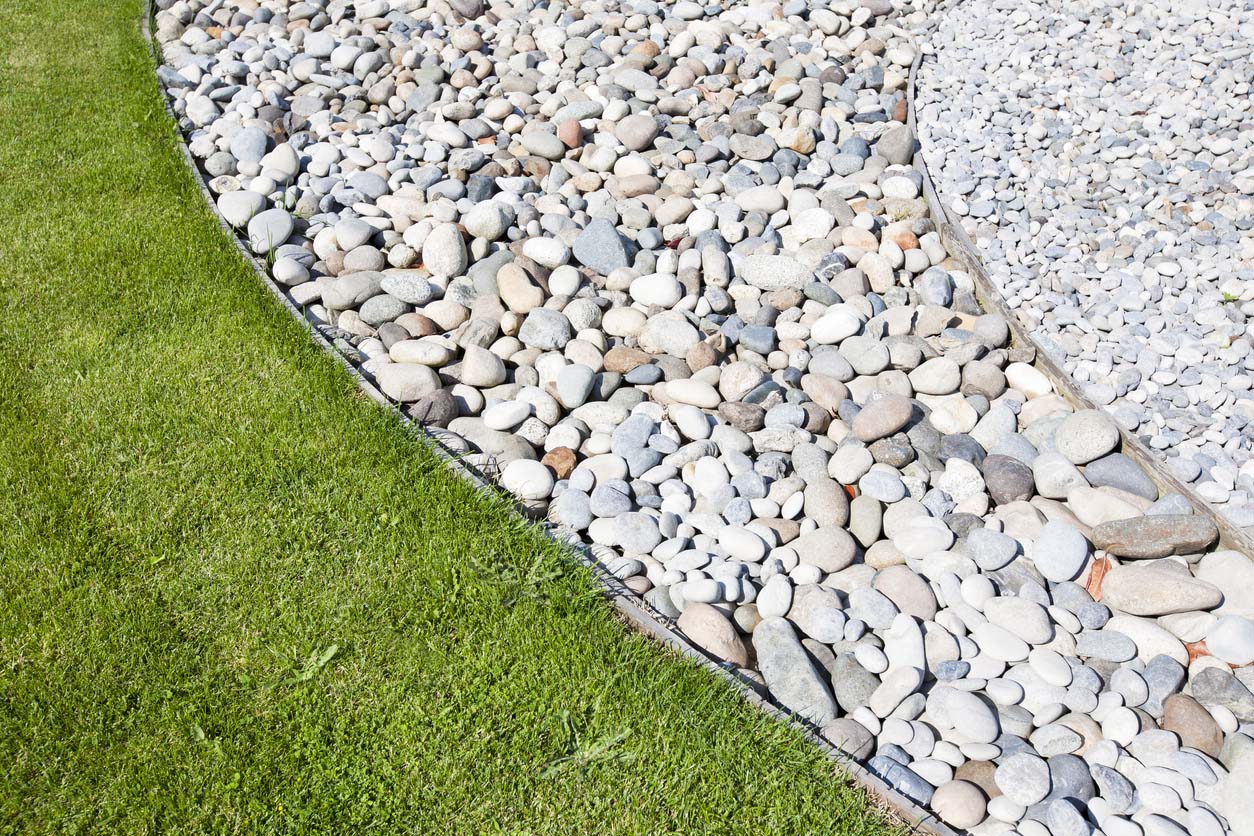
How to Save Money on the Cost of Landscaping Rocks
There is a tremendous variety of landscaping rocks at multiple price points. With so many vendors to choose from, including hardware stores, garden shops, nurseries, craft stores, and wholesale options, it is important to keep the following tips and landscaping hacks in mind to save money during a landscaping rock project.
- Shop around. Get quotes from several rock suppliers and compare prices. Industrial supply companies often charge less than what the big-box stores do.
- Choose the most affordable rocks. Pea gravel, crushed granite, crushed limestone, and river stone cost much less than some of the other materials.
- Avoid overbuying. Make sure to work with a landscaper to determine the exact amount of material needed for the project to avoid overspending.
- Mix and match. Mixing river rocks or landscaping stones with other materials, such as mulch or gravel, can create a unique look while cutting back on costs. This is mainly because less rock material will be needed for the project.
- Buy in bulk. For a large job, buy in bulk since most suppliers will offer better deals on landscaping rock cost that way.
- Stay local. Cut back on delivery costs by ordering from a local supplier.
- Get creative. Visit construction sites and farms to see if they have extra material they would like to get rid of for free or at minimal cost. There may also be some river rocks for sale at low prices or even giveaways through Craigslist, Facebook Marketplace, or Freecycle.
Questions to Ask About Landscaping Rocks Installation
When considering which landscaper to hire to install landscaping rocks for yards, homeowners will want to ask neighbors and friends for recommendations, read reviews online, and compare at least three bids. With such a wide variety of landscape rock types, colors, and styles, it can get confusing and overwhelming. Homeowners will want to ask the following questions when interviewing different landscapers to get a feel for their experience, plans for the project, and of course budget.
- Is most of your experience in hardscaping or landscape gardening?
- How long have you been working on these types of projects?
- Are you bonded and insured?
- Do you carry workers’ compensation?
- Can I see photos and references from your past landscaping projects?
- Do you provide landscape design services or just rock delivery and installation?
- What types of landscape stone are available?
- Do you provide the design plans along with a detailed estimate?
- How much rock will I need for my project?
- What’s your minimum size order for deliveries?
- Do you offer discounts on large landscaping rock orders?
- Does the estimate include cleanup fees?
- How long will the installation take?
- What kind of guarantee do you offer?
FAQs
When homeowners are deciding whether to add landscaping rocks to their property, it is important for them to ask the right questions and to understand what they will pay for the project so they can avoid common landscaping mistakes. The cost will depend on many factors, such as rock type, rock size, bed size, and installation. It is critical for homeowners to realize all the costs involved to reduce the risk of getting a shocking bill when the work is complete. For those just beginning to think about landscaping with rocks and which type to use, the following are a few questions that may come up.
Q. How many square feet does a ton of rock cover?
The amount of space that a ton of rock covers will depend on the size and volume of the rocks. The following table shows coverage by material.
| Material | Coverage (3 inches deep) |
| Crushed rock | 65 to 75 square feet |
| Landscape rock (0.75 inches to 1.5 inches) | 75 to 85 square feet |
| Landscape rock (1.5 inches to 3 inches) | 45 to 60 square feet |
| Lava rock | 200 to 210 square feet |
Q. What size rock is the best for landscaping?
To choose the best rock for landscaping, homeowners will want to look for those that are 1 to 2 inches in size no matter the type.
Q. How long does it take to finish rock landscaping?
The time to complete a rock landscaping project will depend on the size of the property, scope of the project, and even weather conditions. A small project will take about a day, while a larger project can take 1 to 2 weeks. On average, it should take about 2 to 4 days to complete.
Q. How do I calculate the amount of landscape rocks I need?
To calculate how many landscaping rocks you need in cubic yards, measure the area and multiply by the desired coverage in feet. Then divide the sum by 27 to get the total amount in cubic yards. If the homeowner is budgeting for landscape design cost, their designer can help them estimate the amount of rocks they’ll need.
Q. What is the best type of rock for landscaping?
The best type of rock for landscaping depends on the specific project and the goals in mind. Some options include decomposed gravel to enhance a yard to give it a soft, weathered feel; pea gravel to cover driveways or fill in spaces between stepping stones; crushed granite to transition between walkways and garden plants; lava rock for attractive landscaping accents; and river rock to build flower beds or water features.
Q. Does rock landscaping increase a home’s value?
Yes, any type of landscaping upgrade can increase a home’s value up to 20 percent. This can make the cost of landscaping a yard professionally well worth it.
Sources: Angi, HomeAdvisor, Fixr, HomeGuide, LawnLove, This Old House, Forbes, Extra Space Storage

